
By Katie Thomas - Graduate Student, Duke University
July 17, 2015
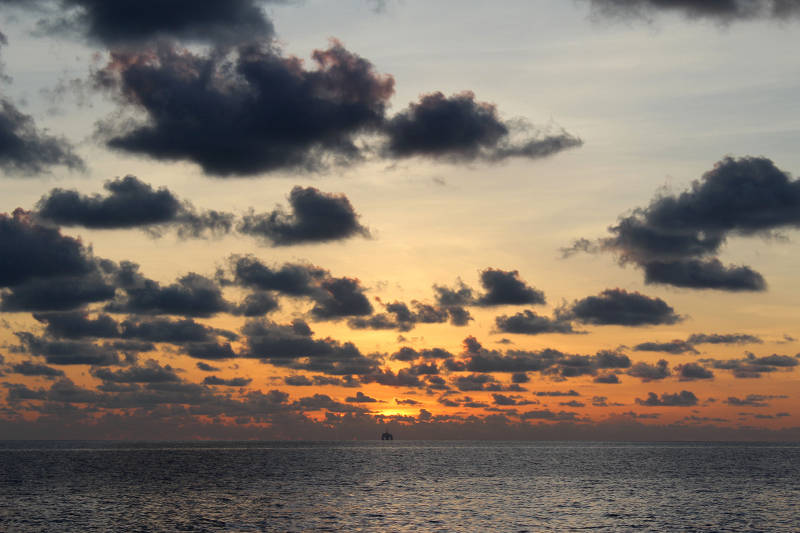
Sunset over a distant oil rig. Image courtesy of Katie Thomas. Download larger version (jpg, 2.0 MB).
We are on the third day of our cruise and things are going well. Initially we saw many oil rigs and ships surrounding us, but now there is nothing but sapphire blue water in every direction.
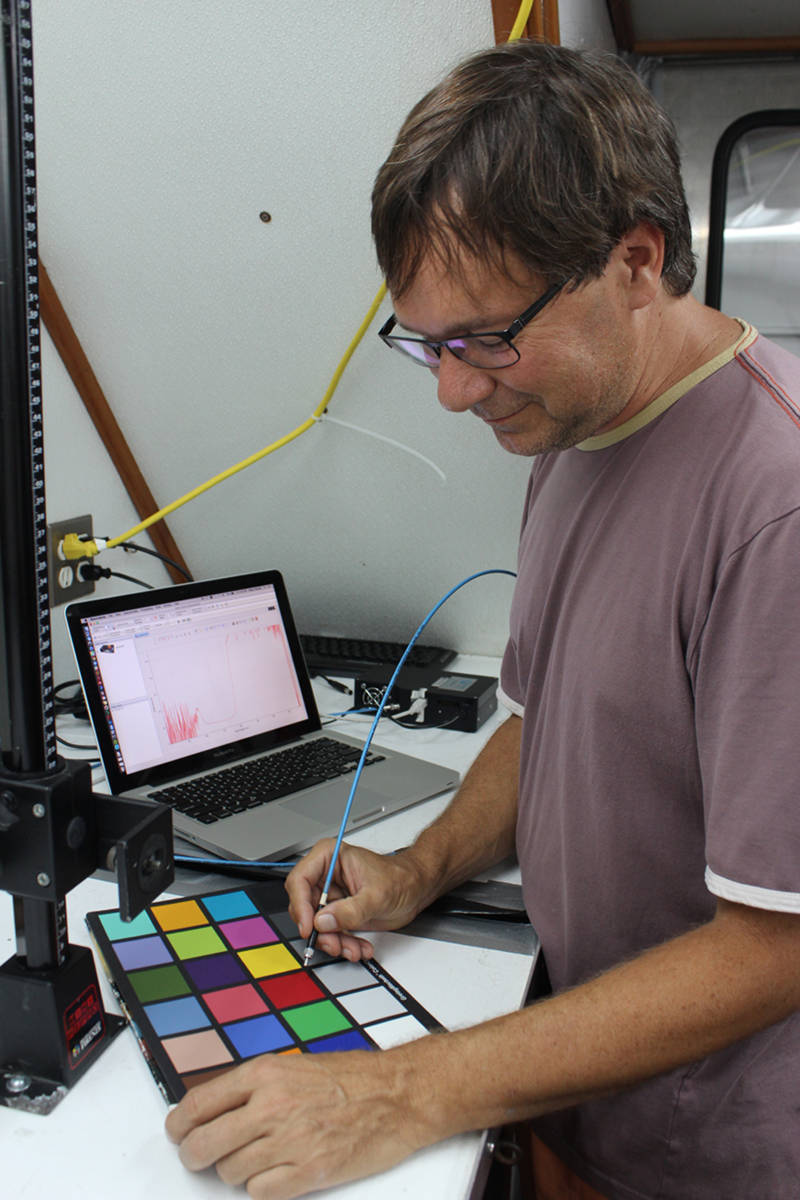
Sönke Johnsen holds the fiber optic probe to a color standard. The spectrometer is to the right of the computer, which is displaying the spectrum. Image courtesy of Katie Thomas. Download larger version (jpg, 4.6 MB).
We have been doing a couple remotely operated vehicle (ROV) dives per day to collect specimens from the seafloor, and my job is to help look for evidence of bioluminescence in the species we bring up. This is a glorified way of saying that I stand in a dark room next to my PhD advisor poking and prodding deep-sea animals with my finger. Many organisms glow when disturbed, so this is the best way for us to witness bioluminescence in the lab.
When we find a glowing species, we measure the spectrum of the light the animal is emitting. For this, we hold a fiber optic probe close to the animal while we stimulate bioluminescence. The light travels through the fiber and into a spectrometer, which measures the amount of light at each wavelength (essentially the color composition of the light).
We are interested in the color of bioluminescence because it determines how well organisms on the deep seafloor may be able to see the emitted light and how it may be used. Our science team is studying both bioluminescence and vision in bottom-dwelling animals so we can better understand the visual ecology of this habitat.
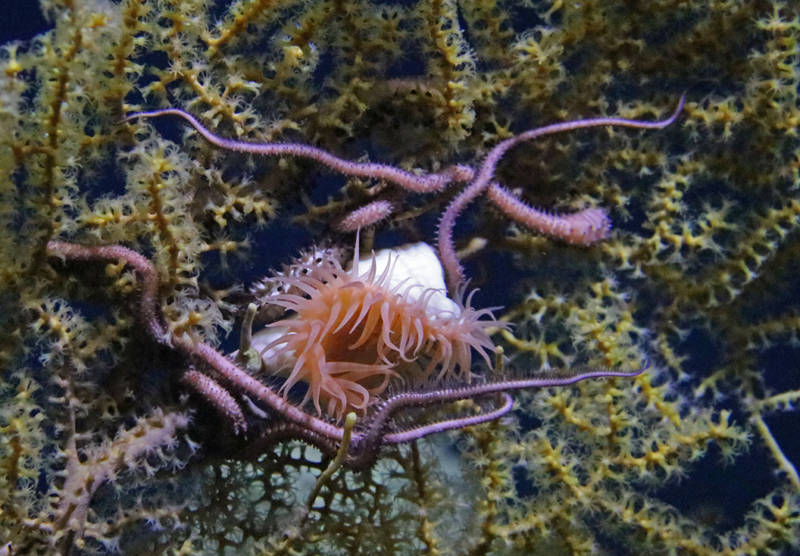
A pink sea anemone and two brittle stars on a branching coral. The anemone mouth is in the center of all the tentacles. Image courtesy of NOAA Bioluminescence and Vision on the Deep Seafloor 2015. Download larger version (jpg, 2.4 MB).
We started testing animals for bioluminescence yesterday afternoon. We tried a shrimp that we suspected may eject a cloud of bioluminescence like some of its cousins do, but we had no luck despite our expertly executed prodding skills. The shrimp may have used up all of its luminescent secretions during the startling process of being collected by the ROV.
We had more luck when we turned to a large pink anemone, similar to the one pictured at right. When stroked around the rim of its mouth, it emitted a bright green glowing substance, likely a bioluminescent mucus. This may be used to deter predators who consider munching on the anemone’s soft tentacles.
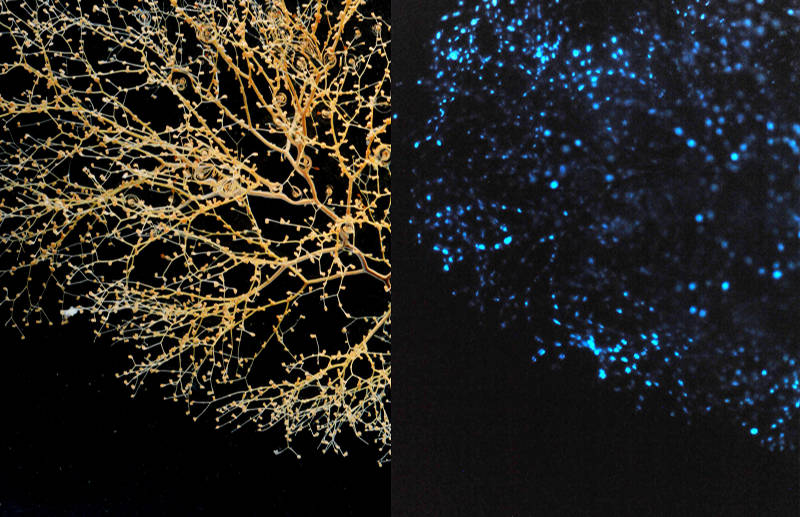
The coral Chrysogorgia under regular white light (left) and with bioluminescence (right). Images courtesy of Edie Widder (left photo), Sönke Johnsen (right photo). Download larger version (jpg, 2.2 MB).
The most exciting thing I’ve seen so far happened in the dark room when I was blindly groping around in a five-gallon bucket of seawater, searching for our next specimen. I accidentally bumped a large feathery coral while reaching for something below, and the point of contact glowed blue and then light radiated outward in a wave across the entire coral.
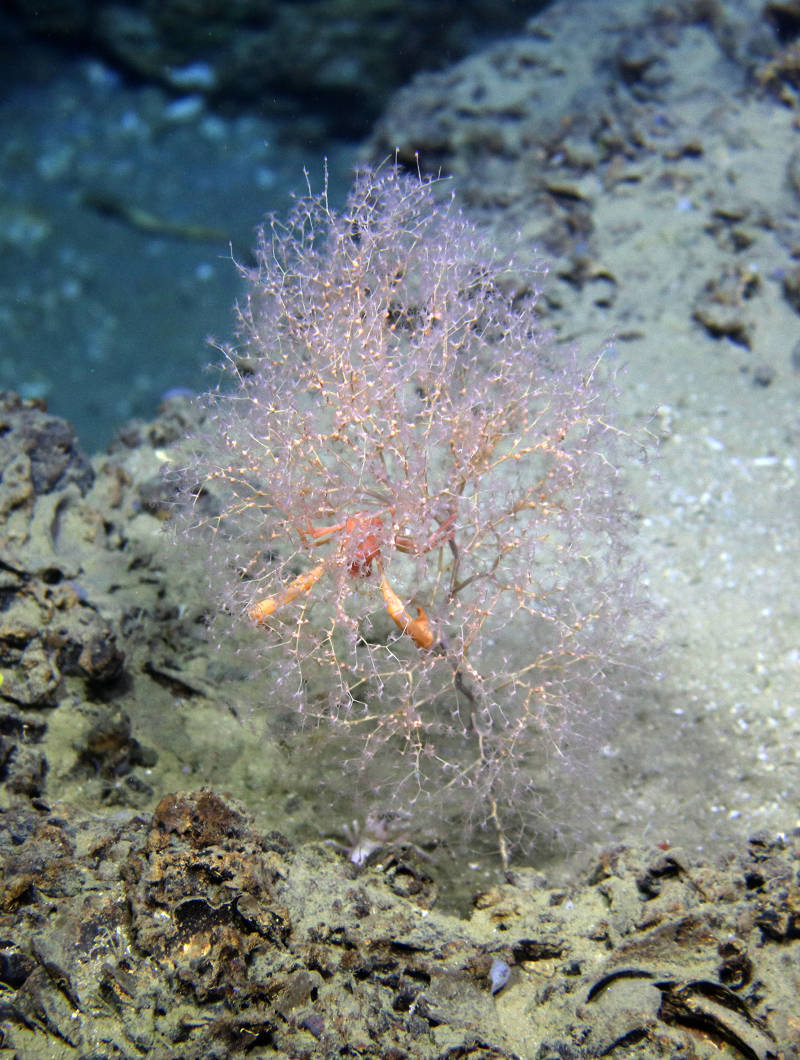
The coral Chrysogorgia with the crab Uroptychus. Image courtesy of NOAA Bioluminescence and Vision on the Deep Seafloor 2015. Download larger version (jpg, 2.0 MB).
Above is a photo of the same coral at about 1,000 meters deep before we collected it with the ROV. You can see a small crab clinging to its branches. I imagine that before the submersible arrived with its bright lights, each movement of the crab caused ripples of light to course through the coral in the darkness. It is wonderful to be a part of exploring this beautiful, largely unknown world.